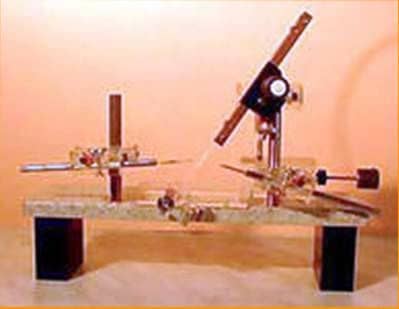
For beekeeping, it is simply necessary to identify, fix and breed the best genotypes in which the best signs of economically useful bees are fully present. That is, the newly-derived bees must be as productive as possible, and also be able to adapt well to natural climatic and medosborne conditions.
A high degree of purity of mating is guaranteed when using and improving the method of instrumental insemination of queens.
The greatest importance in this method is given to the selection and preparation of families, both maternal and paternal. For this insemination, only the best families are used, in which outstanding indicators are clearly expressed. The origin of queens and drones is known, which makes it possible to make full use of their potential.
From the very beginning of spring, the queens from tribal families are occasionally placed on the drone honeycombs in an isolator consisting of a separation grid. The duration of the placement is 2 – 3 days. After the larvae are removed, this honeycomb is transferred to a family-educator, which was formed using the method “without osorotation,” just as before the family-educator in which the uterus was grown was formed. For this, a “honey barrier” is created, and several bees with the uterus are separated from the others by a partition with a window made of a 15×8 cm separation grid. It is very convenient to place the family in a hive-lodge.
The best option can be a beehive with 20 – 24 frames, in which there is a main compartment consisting of 13 – 14 frames, and a small one, in which 7 – 10 frames. Of great importance is the influence of family data on the development of drones. The best educators are obtained from young, developing and viable families. It is not necessary to overload the family-educator by feeding larvae: one single drone honeycomb is enough for one family.
Thanks to the presence of the uterus in the family, the umbilicus is very active when collecting pollen from bees. The brood brood, which was previously in the family, is removed. To ensure that the tribal drones do not scatter, or that other drones do not fly, it is necessary to install a checkered veranda. After reaching drones of 10-12 days, they can be used for sperm selection. The best time for this is from early morning to 10 hours. If the drone is high-quality and sexually mature, then during selection it emits a vibrating sound.
To get high-quality queens, you need:
– For the mother families to select the best, the origin of which is known, as well as the valuation for bonitirovanie was the highest;
– In families, educators should be present: many young bees, broods of different ages;
– Inoculation of larvae not older than 1 day, the quality of the uterus depends on this;
– In a family-educator, no more than 10-12 mothers should be fed at a time.
Чистка ульев. Щавелевая кислота для обработки.
Mothers and uterus